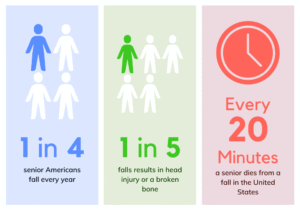 A fall can lead to serious injuries that significantly limit mobility and daily activities, potentially requiring increased assistance and impacting quality of life. Early intervention is key – addressing fall risks as soon as possible can significantly reduce the likelihood of falls and associated injuries. Research consistently indicates that the most effective way to prevent falls is through regular exercise programs specifically designed to improve balance, strength, and gait. Alongside this, modifying the home environment to remove tripping hazards and ensuring adequate lighting are also crucial elements of fall prevention strategies.
A fall can lead to serious injuries that significantly limit mobility and daily activities, potentially requiring increased assistance and impacting quality of life. Early intervention is key – addressing fall risks as soon as possible can significantly reduce the likelihood of falls and associated injuries. Research consistently indicates that the most effective way to prevent falls is through regular exercise programs specifically designed to improve balance, strength, and gait. Alongside this, modifying the home environment to remove tripping hazards and ensuring adequate lighting are also crucial elements of fall prevention strategies.
Exercise
Studies consistently show that exercise programs incorporating balance, strength, and gait training significantly reduce fall risk, with some research indicating a fall reduction of up to 40% with proper exercise routines.
Home Modification
A comprehensive fall prevention strategy should involve lifestyle modifications, exercise programs, home safety adaptations, and regular medical checkups. Home safety modifications could include:
Lighting: Ensuring adequate lighting throughout the home, especially on stairs and hallways.
Clutter removal: Removing tripping hazards like loose cords, rugs, and clutter from walking paths.
Grab bars: Installing grab bars in bathrooms and near toilets for added support.
Non-slip surfaces: Using non-slip mats in bathrooms and on high-traffic area
The patient’s active participation and adherence to fall prevention recommendations is crucial for success. Occupational therapists such as www.othousecallsdenver.com can help you develop a safe and effective fall prevention plan. The therapist will assess the person’s fall risk factors, tailor fall prevention strategies based on individual needs and risk factors, and periodically re-assess to track progress and adjust interventions as needed.
Article submitted by:
Nancy Dillinger, OTR/L
OT House Calls, Licensed Occupational Therapist
phone 303-775-4984
e-fax 720-343-3945
email othousecalls@gmail.com
References
Mayo Clinic
National Institute on Aging (.gov)
